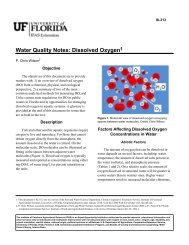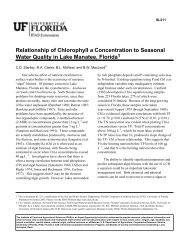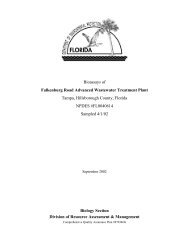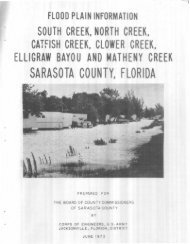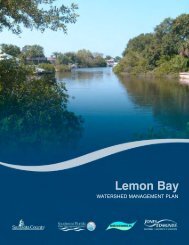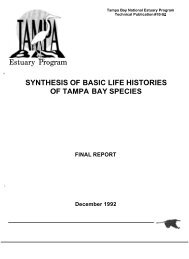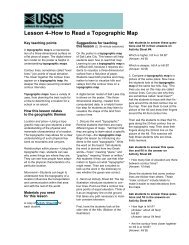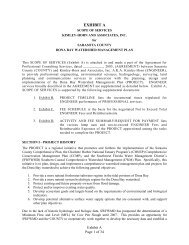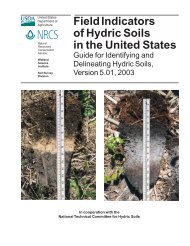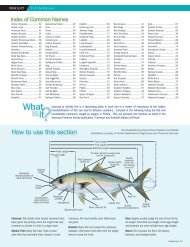CLIENT NAME - Sarasota.WaterAtlas.org
CLIENT NAME - Sarasota.WaterAtlas.org
CLIENT NAME - Sarasota.WaterAtlas.org
Create successful ePaper yourself
Turn your PDF publications into a flip-book with our unique Google optimized e-Paper software.
5 and 6), but some tanks cannot be used under current operating conditions. In theabsence of these tanks, the recommended storage is not met in 2025. The County will beable to conduct further storage requirements for fire flow analysis after completion of thehydraulic water model.It should be noted that the analysis provided in this section is based on system-wideconsiderations. The system as a whole provides sufficient reserve storage. However,evaluations for individual storage tanks may produce other recommendations for individualstorage tanks, such as in the Carlton WTF Finished Water Storage Capacity AnalysisReport (Carollo, 2004).2.4.3.3 Siesta Key Utilities Authority Storage TanksIn July 2006, the County is scheduled to assume responsibility for the SKUA and all of theirassociated facilities. SKUA has three storage tanks that will be conveyed to the County atthat time. Although this storage capacity was not included in the analysis of storagerequirements in this WSMPU, the capacity will be available after July 2006. Therefore, thetanks are included in the inventory in Appendix H and a brief description of the SKUAstorage facilities is included below.The SKUA has three storage tanks with a total capacity of 3.75 MG. Two of the storagetanks, capacities of 0.75 MG and 2 MG, are located at the SKUA treatment facilities site.The tanks can store water received by <strong>Sarasota</strong> County, which is then re-disinfected ifnecessary and delivered to the distribution system via high service pumps. The thirdstorage tank is located at the SKUA office site and has not been used for many years.SKUA reports that the condition of the inside of this tank is unknown.2.4.4 Automatic Flushing UnitsIn areas of new growth, installed infrastructure is often sized for the ultimate build-outcapacity of the service area. This can cause problems in the interim period when arelatively small number of customers utilize the transmission mains. These “over-sized”mains cause problems in the distribution system, primarily stagnant water and little or nodisinfectant residual. In order to prevent these conditions, flushing of dead-end or oversizedmains is practiced. In cases in which a large volume of water must be flushed in orderto maintain a disinfectant residual, an automatic flushing system can be installed.The County has installed five Hydro-Guard direct discharge automatic flushing units in theirdistribution system. These units allow the user to connect to a discharge line to dispose ofthe flushed water. The units also are equipped with backflow prevention devices and watermeters.FINAL - August 31, 2005 52H:\Client\SAR Co_SAR\6873C00 WATER SUPPLY MASTER PLAN UPDATE\Deliverables\TM 2 - Water System Assets\Final\TM2 Final.doc



